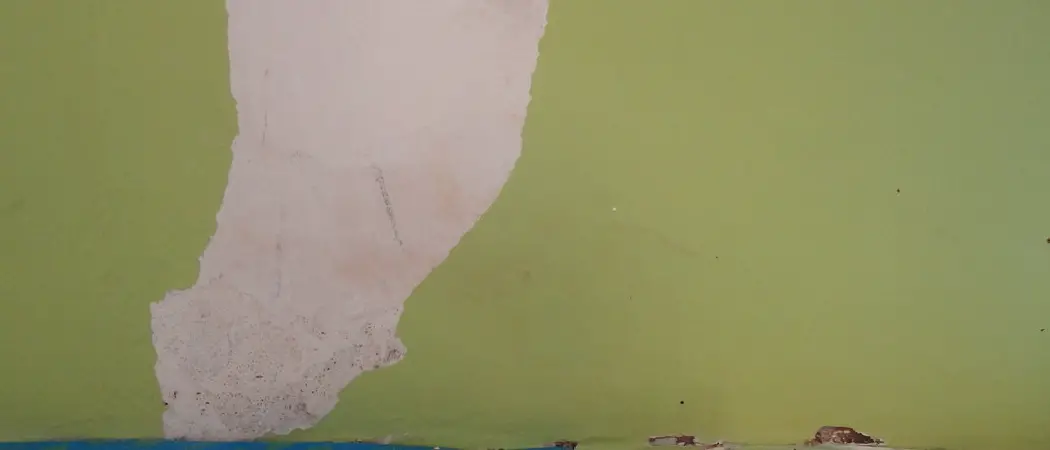Have you ever walked into a room and immediately noticed an unsightly water stain on the walls or ceiling? Maybe it was from a leaky roof, a burst pipe, or even a natural disaster. Regardless of the cause, one thing is sure – water damage can be a major eyesore in any home or building.
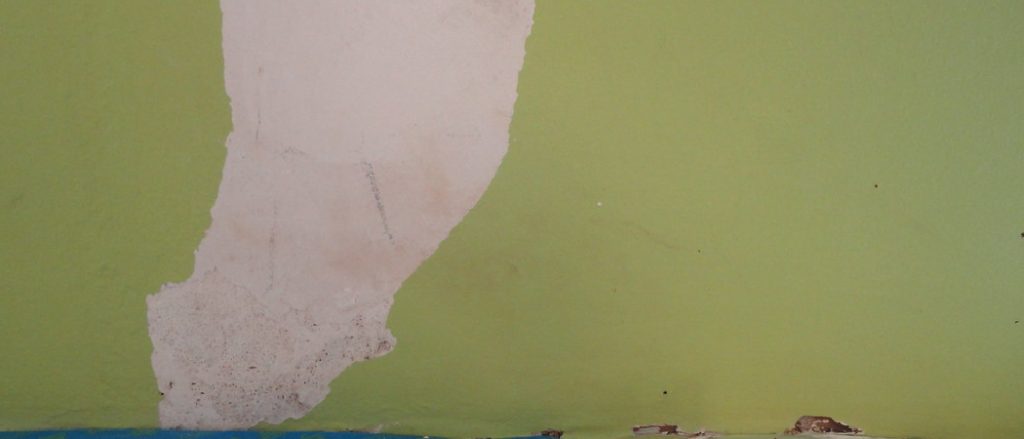
But what if we told you that there might be a way to cover up those pesky stains? That’s right; in this post, we’ll explore the question many homeowners ask: Can you paint over water damage? So, let’s dive in and find out if painting is a viable solution for concealing those stubborn marks.
Types of Water Damage
Clean Water Damage
Can you paint over water damage from clean water leaks? In most cases, yes. Clean water is generally considered to be free of contaminants and doesn’t pose a threat to your health. This type of water damage can usually be easily remedied by properly drying out the affected area and using a primer before painting.
Grey Water Damage
When it comes to grey water damage, which includes water from sources like dishwashers, sinks, and washing machines, painting over it may be possible but not recommended. Grey water can contain various chemicals and contaminants that can affect the finish of your paint or even pose a health risk. In this case, it’s best to address the source of the leak and properly clean and dry the affected area before painting.
Black Water Damage
Lastly, we have black water damage, which is water that contains sewage or other harmful materials. This type of water damage is not only unsightly but also poses a significant health risk. In this case, it’s crucial to hire a professional for proper cleanup and remediation before even considering painting over the damaged area.
When Painting Isn’t Possible
Structural Damage
If the water damage has caused significant structural damage to your walls or ceiling, then painting over it may not be a viable solution. In this case, it’s important to address the source of the problem and repair any structural issues before even considering painting.
Mold Growth
If you notice signs of mold growth on your walls or ceiling, then painting over water damage is not recommended. Mold can be hazardous to your health and should be properly remediated by a professional before any painting takes place.
Safety Hazards
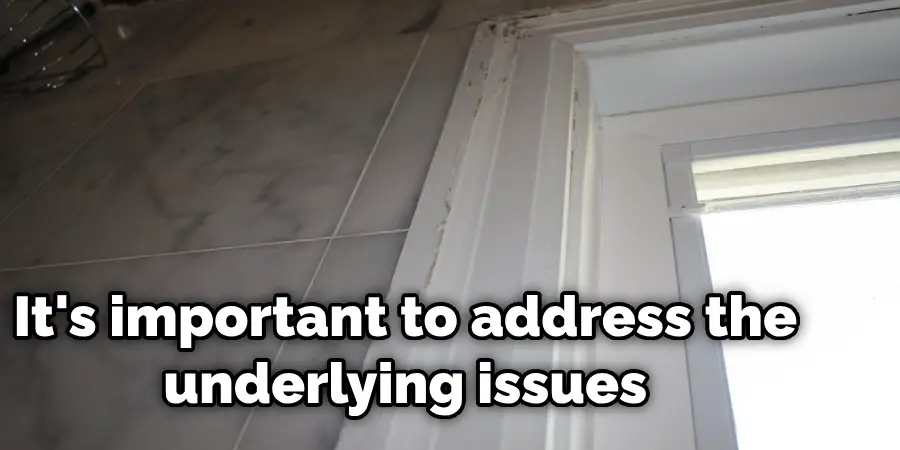
Lastly, if the water damage has caused electrical issues or compromised the structural integrity of your walls or ceiling, then it’s not safe to paint over it. In these cases, it’s important to address the underlying issues and fix them before even thinking about painting.
When it is Possible: Can You Paint Over Water Damage
So, can you paint over water damage? The answer is yes, but only in certain situations. It’s important to assess the extent of the damage and address any underlying issues before even considering painting.
Additionally, it’s crucial to use proper techniques and materials when painting over water damage to ensure a long-lasting and visually appealing result. In some cases, it may be best to hire a professional for the job.
In conclusion, painting over water damage can be a viable solution in certain situations, but it’s important to assess and address the damage properly before proceeding. So don’t let those pesky water stains ruin the look of your home – with proper evaluation and technique, you can paint over them and restore the beauty of your walls or ceiling. So go ahead, grab that paintbrush, and give your home a fresh new look!
Assessing the Damage Whether Can You Paint Over Water Damage
Can you actually paint over water damage? The answer is it depends. Before you break out the paintbrushes and rollers, it’s important to assess the extent of the water damage first. Now, let’s delve into some common scenarios where painting over water damage is possible and when it’s not.
Minor Water Stains
If the water damage is minimal, such as a small leak or spill that was quickly wiped up, then painting over it may be a viable option. In this case, the source of the moisture has been addressed, and there are no structural issues or mold growth. A minor water stain can easily be primed and painted over, leaving your walls looking as good as new.
Dry Walls
Another scenario where painting over water damage is possible is when the affected area has completely dried out. This means that there is no longer any moisture present, which could lead to further damage or mold growth. Before painting, make sure to thoroughly inspect the drywall for any signs of mold or structural damage, as these issues will need to be addressed before painting.
Paintable Surfaces
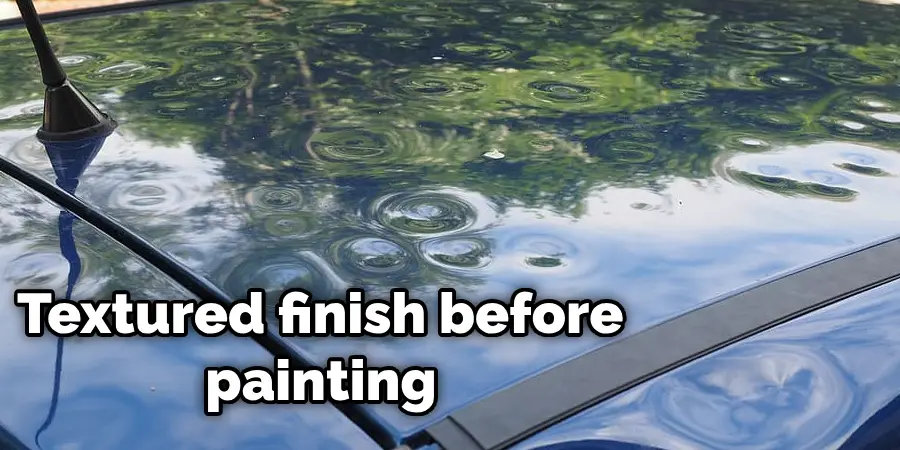
It’s important to note that not all surfaces are suitable for painting over water damage. For instance, if the damaged area is wallpapered or has a textured finish, simply painting over it may not give you the desired results. In these cases, it’s best to remove the wallpaper or textured finish before painting. Additionally, if the water damage has caused the walls to become soft or swollen, painting over them may not be an effective solution.
Step-by-Step Guide on How to Paint Over Water Damage
Preparing the Surface
Cleaning the Area
Before you begin painting, make sure to clean the affected area thoroughly. Use a mild detergent and water solution to remove any dirt or debris that may have accumulated on the surface.
Sanding
If there are any rough patches or bumps on the damaged area, use fine-grit sandpaper to smooth it out. This will ensure that your paint job looks seamless and professional.
Applying Primer
Once the area is clean and smooth, it’s time to apply a primer. A good quality primer will help seal any remaining water stains and create a smooth surface for the paint to adhere to.
Choosing the Right Paint
Factors to Consider
- Water Resistance: When painting over water damage, it’s important to choose a paint that is water-resistant. This will ensure that the stains do not bleed through and ruin your new paint job.
- Stain Blocking Properties: Look for paints with stain-blocking properties, as they are specifically designed to cover up stubborn water stains.
- Mold Prevention: If there is any risk of mold growth, it’s best to choose a paint that has mold and mildew-resistant properties.
Painting the Area
Tools You’ll Need
- Roller
- Paintbrush
- Drop Cloth or Tarp
Step-by-Step Process:
- Begin by painting along the edges of the damaged area with a paintbrush.
- Use a roller to cover the rest of the area with an even coat of paint.
- Allow the first coat to dry completely before applying a second coat if needed.
- Once the final coat is dry, inspect the area for any remaining water stains and touch up as necessary.
- Clean up your tools and dispose of any leftover materials properly.
Finishing Touches
Once the paint has dried, you can add some finishing touches to make the area look even better. For instance, you can use a texture spray to create a textured finish or add a decorative wallpaper border to cover up any remaining imperfections.

So, you know the answer: can you paint over water damage? if you can, these steps can help you achieve a flawless finish. Remember, if the water damage is too extensive or has caused structural issues, it’s best to consult a professional instead of attempting to paint over it yourself.
When Should You Seek Professional Help?
Extensive Damage
If the water damage is extensive, covering it up with paint may not be enough. In these cases, it’s best to seek professional help, as they will have the necessary tools and expertise to repair and restore the damaged area properly.
Mold Growth
Mold can be a serious health hazard and should not be taken lightly. If you notice any signs of mold, such as a musty odor or black spots, it’s crucial to call in a professional. They will be able to safely remove the mold and address the source of the moisture.
Troubleshooting Common Issues with Painting Over Water Damage
Paint Peeling or Bubbling
If you notice your newly painted area starting to peel or bubble, it’s likely due to excess moisture still present in the damaged area. In this case, it’s best to remove the paint and properly address any underlying issues before attempting to repaint.
Uneven Color
Uneven color can be caused by several factors, including improper cleaning and priming or using low-quality paint. To fix this issue, make sure to properly clean and prime the area before applying high-quality paint.
Stains Reappearing
If water stains start to reappear after painting over them, it could be due to a leak that was not properly addressed or mold growth behind the walls. It’s best to consult a professional in this case to properly address the issue.
Bleed-through
Bleed-through occurs when the water stains start to seep through the new paint job. This can be prevented by using a high-quality stain-blocking primer before painting and making sure that all underlying issues are properly addressed.
Visible Texture Differences
If the affected area has a textured finish, it can be challenging to achieve the same texture with paint. In these cases, using a texture spray or consulting a professional may be necessary to achieve a seamless look.
By following these steps and being aware of potential issues, you can successfully paint over water damage and restore your walls to their former glory.
Safety Precaution While Painting Over Water Damage
Protective Gear
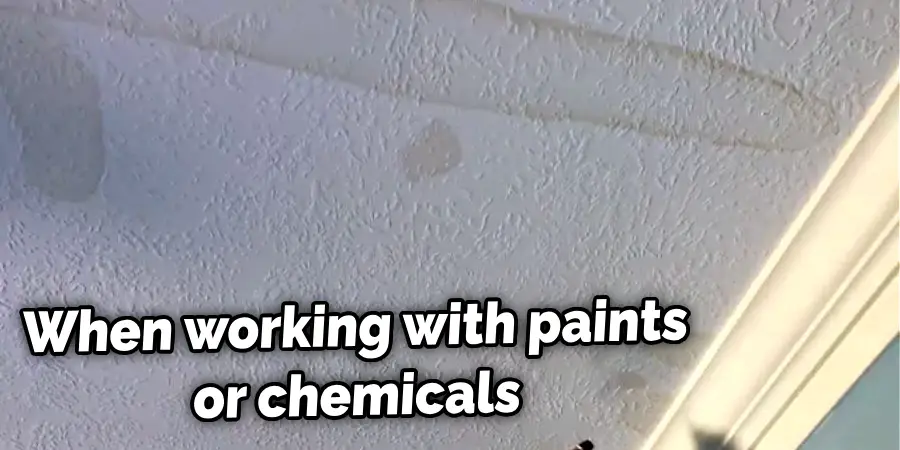
Always wear protective gear, such as gloves and a mask, when working with paints or chemicals. This will protect you from any potential health hazards.
Ventilation
Make sure to keep the area well-ventilated while painting to avoid inhaling any fumes or chemicals.
Proper Disposal
Dispose of all leftover materials properly and follow any local guidelines for disposing of hazardous waste.
Consult a Professional
If you have any concerns or doubts about painting over water damage, it’s always best to consult a professional. They will be able to assess the situation and provide expert advice on how to properly address the issue.
Tips for Preventing Water Damage
Inspect and Repair Leaks
Regularly inspect your home for any leaks or water damage. If you notice any issues, such as a leaky roof or a faulty pipe, make sure to have them repaired immediately to prevent further damage.
Properly Seal Windows and Doors
Make sure that all windows and doors are properly sealed to prevent water from seeping in during heavy rainstorms.
Clean and Maintain Gutters
Clogged gutters can lead to water pooling on your roof, causing potential damage. Make sure to clean out your gutters regularly and fix any issues with them.
Check Your Appliances
Regularly check your appliances, such as the dishwasher and washing machine, for any leaks or wear and tear. Address any issues immediately to prevent water damage.
Maintain Your Yard
Properly grade your yard to ensure that water flows away from the foundation of your home. This will prevent excess moisture from seeping into your walls and causing damage.
Inspect Your Roof
Regularly inspect your roof for any signs of damage, such as missing shingles or cracks. Address any issues promptly to prevent water from seeping in.
While water damage can be a frustrating and daunting issue, it’s important to address it properly and take preventative measures to avoid future damage.
The Advantages of Utilizing Environmentally-Friendly or Low VOC Paints for Repainting Water-Damaged Surfaces
Reduced Health Risks
Traditional paints often contain high levels of volatile organic compounds (VOCs), which can have harmful effects on our health. Using environmentally friendly or low-VOC paints can reduce these risks and create a safer environment for both yourself and your family.
Eco-Friendly
Switching to environmentally friendly paints reduces the release of harmful chemicals into the environment, making it a more eco-friendly option.
Quicker Drying Time
Low VOC paints tend to dry faster than traditional paints, allowing you to finish your project in less time. This can be especially beneficial when repainting water-damaged surfaces that need to be addressed quickly.
Longer-Lasting Finish
Environmentally-friendly and low VOC paints are often more durable and can provide a longer-lasting finish compared to traditional paints. This means less frequent repainting, saving time and money in the long run.
Improved Indoor Air Quality
Using low-VOC paints can significantly improve indoor air quality, making it a healthier option for those with respiratory issues or allergies.
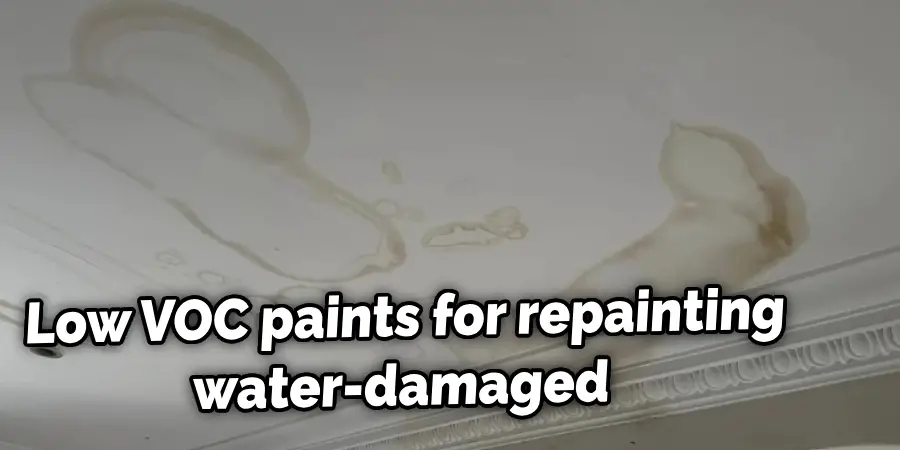
By choosing environmentally friendly or low VOC paints for repainting water-damaged surfaces, not only are you protecting yourself and the environment, but you may also see improved results in terms of finish and durability.
How to Properly Maintain and Prevent Future Water Damage
Regular Inspections
Perform regular inspections of your home, both inside and out, to check for any signs of water damage. Address any issues promptly.
Proper Maintenance
Stay on top of proper maintenance tasks, such as cleaning gutters and fixing leaks, to prevent potential water damage in the future.
Address Issues Immediately
If you do notice any signs of water damage, address them immediately to prevent further damage and potentially more costly repairs.
Invest in Waterproofing
Consider investing in waterproofing measures for your home, such as applying a sealant to external walls or installing a sump pump. This can help prevent water from seeping into your walls and causing damage.
Regularly Clean and Dry Surfaces
Make sure to regularly clean and dry any surfaces in your home that are prone to water exposure, such as showers and sinks. This will help prevent mold growth and potential damage.
Consult a Professional
If you’re unsure of how to maintain or address an issue with water damage properly, it’s always best to consult a professional for expert advice. They can assess the situation and provide recommendations for the best course of action.
By following these tips, you can successfully maintain your home and prevent future water damage, ultimately saving you time and money in the long run.
Conclusion
In summary, “Can you paint over water damage?” is nuanced. Proper precautions and meticulous preparation make it possible to repaint and restore areas affected by water damage successfully. From wearing protective gear and ensuring good ventilation to using eco-friendly or low VOC paints for a safer, quicker, and more durable finish, these steps are crucial. However, the foundation of any good paint job over water damage lies within thorough inspections, timely maintenance, and addressing issues promptly to prevent further damage.
Whether you are a DIY enthusiast ready to tackle a small project or a homeowner facing extensive water damage, know your limits and don’t hesitate to consult with a professional. Investing in expertise can often save time and additional costs by ensuring the job is done right the first time.
Let this serve as an empowering reminder that with the right approach, you can reclaim the comfort and aesthetics of your living space. Water damage doesn’t have to end your property’s story; instead, it can be a chapter of resilience and renewal. So take a deep breath, gather your tools and knowledge, and breathe new life into your home.

